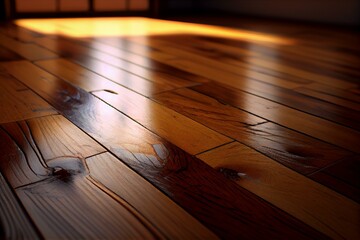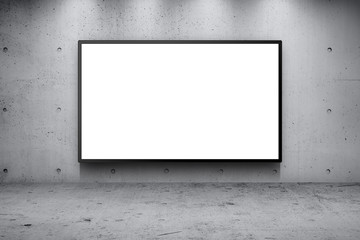Hardwood Floor Refinishing Bergen County NJ can help restore your floors’ appearance and protect them from future damage. It’s important to refinish your hardwood floors on a regular basis.
Having your wood floors regularly refinished can prevent staining and water damage. This can save you the expense of replacing your hardwood floors. It can also keep your floors looking great for longer.
The first step in refinishing hardwood floors is to sand the wood. This is done with a large drum sander that takes the surface off the boards and makes them smooth. It is a messy job, and wearing protective equipment such as a respirator is important. A dust containment system is also a good idea. Ideally, the area being sanded should be sealed off from the rest of the house.
When determining what kind of sanding to do, it is important to think about the type of wood and its grain. Softer woods, like pine, will need to be sanded much more lightly than harder woods such as oak. This is because the grain in soft woods tends to show through the finished surface more than it does in hard woods.
Start with a 40-grit belt, then move on to 60 and finally 100 grit. This will remove the old finish and most scratches and gouges. It can be difficult to see where you’ve sanded without the old finish present, so it is helpful to mark areas with a pencil and use landmarks on the walls or floor to keep track of your progress.
After sanding, the floor should be vacuumed and wiped down with a damp cloth to remove any residue. It is then ready to be stained or covered with a new finish. It is important to choose a low or no VOC (volatile organic compound) product that won’t release harmful vapors into the home.
Refinishing can be an expensive project, but it can be worth it if your floors are looking worn and you want to increase the value of your home. It is important to remember, however, that refinishing cannot fix very deep scratches or gouges in the wood. If you have severe damage, it might be a better idea to replace your flooring. However, refinishing can significantly improve the appearance of your home and make it more appealing to potential buyers. The key is to prepare properly and get help from a professional who has experience with this type of work.
Staining
Staining is a crucial step in floor refinishing. It helps to give the wood a new color and can improve its appearance as well. There are many different colors to choose from, and a flooring professional can help you find the perfect one for your home. They will also explain the benefits of each type of stain so you can make an informed decision.
When staining, it is important to work in a well-ventilated area. It is also a good idea to wear a mask and gloves for protection. You should test the stain on an inconspicuous part of the floor to see if it meets your expectations. Once you have tested the stain, it is time to start applying it to the floor. It is best to work from one end of the room to the other to avoid overlapping and leaving marks.
Once the stain has been applied, it needs to dry. This can take up to several hours. Once the stain has dried, a finish can be applied to protect it and add a sheen to the floor. This can be a varnish, polyurethane, or another type of finish.
Hardwood floors are a beautiful addition to any home, and they can increase the value of your property as well. However, over the years, they can lose their luster and look dull or damaged. Refinishing your hardwood floors can restore their beauty and protect them from future damage.
If you are thinking of refinishing your hardwood floors, it is important to hire an experienced contractor. They will have the tools and knowledge to do a quality job and can make your hardwood floors look new again. They will also know how to use the proper techniques for sanding and staining. They will also be able to handle the job with minimal dust and disruption to your home. They will have a containment system in place to keep the dust out of your house, and they will take every precaution necessary to keep the project clean and safe for you and your family.
Sealing
A quality sealant will help elongate the life of your hardwood floors and prevent damage caused by everyday wear and tear. A reputable Bona Certified Craftsman will be able to determine the best sealant for your wood floor, taking into consideration the grain pattern and color of your flooring as well as any previous finish layers.
When deciding to apply a sealant to your flooring, it is important to understand the curing process. Most sealants require a significant amount of time to dry, and can be easily damaged by premature contact with furniture or other household items. A professional will ensure that your sealant is fully cured before moving any furnishings back into the space.
Although a protective layer, a sealant should not be considered a substitute for regular maintenance of your hardwood floors. In order to protect your floors from dirt and moisture, you should sweep regularly with a soft brush attachment, and vacuum frequently using the hose/brush extension. In addition, placing mats in front of sinks and doors will help prevent water damage. It is also recommended to reapply your floor sealant every few years to keep it in top condition.
The refinishing process is an intensive project that requires proper tools and training. It is always best to hire a professional, especially if your floors are heavily damaged or in need of extensive repair. They will be able to complete the work faster and more accurately than you would be able to on your own.
It can take anywhere from 3-5 days to refinish your hardwood floors with an oil based polyurethane (plus drying time), depending on the condition of your floor/stain, how dark the stain is, and the weather conditions (dry/not humid). A good refinisher will let you know if they recommend 2 or 3 coats of finish. It is generally better to go with more rather than less, as this will provide you with a superior level of protection and a glossy finish.
Cleaning
Hardwood floors add value to your home and are a beautiful addition to any room. However, they do require regular cleaning and maintenance to keep them looking their best. Cleaning helps to prevent dirt, dust and debris from settling on the surface of the wood which can cause permanent damage over time. In addition, regular cleaning can help to remove scuffs and scratches from the floor.
A typical hardwood floor requires a deep clean every 6 to 12 months. The process starts with sweeping and vacuuming the floors to remove any loose debris or dirt that may have settled on the floor. After that, an alkaline cleaner is used to reach down into the pores of the hardwood and clean away any deep dirt that has accumulated. After the floor has been thoroughly cleaned, it is mopped with a neutral cleaner to return the floor to its original sheen. After the floor is mopped, it is necessary to wait for the floor to completely dry before anyone walks on it again.
When the cleaning and sanding processes are complete, it is important to be sure that all of the dust is gone from the floor before applying a final coat of finish. This can be done by vacuuming or using a microfiber or tack cloth to wipe the floor down until it is completely dust-free. Turning on ceiling fans or using a circulating fan in the room is also a good idea to speed up the drying process.
In the long run, keeping your hardwood floors in pristine condition is an investment that can reap many rewards. Regular cleaning, refinishing, and sanding can prolong the life of your hardwood floors and ensure that they continue to look as good as new for years to come.
Avoid using harsh chemicals or cleaners on your hardwood floors as they can be bad for them and damage the wood’s natural integrity. Instead, opt for a mild solution of water and vinegar or another natural cleaning product to keep your hardwoods as clean as possible.



